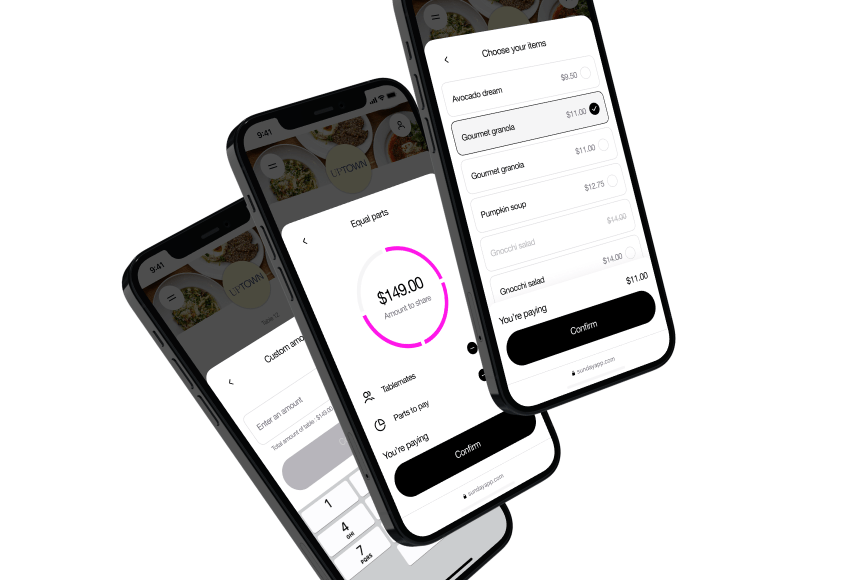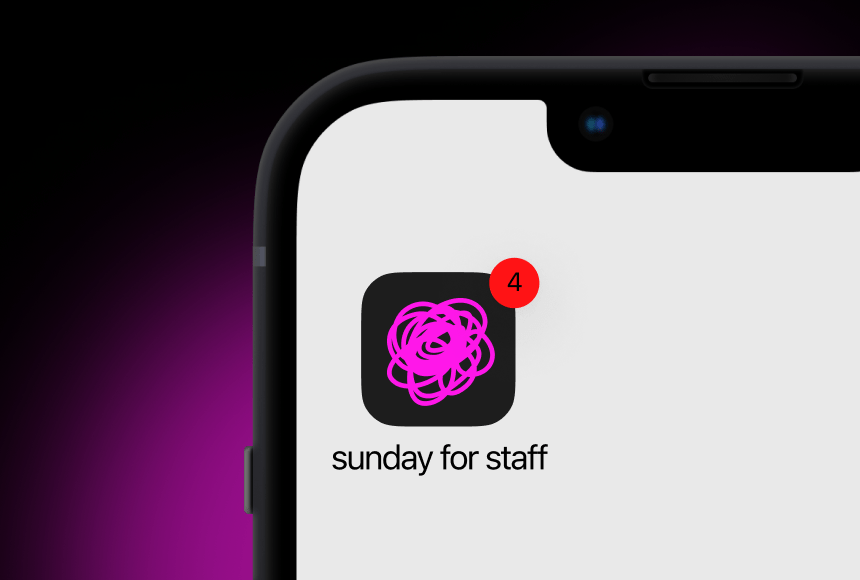
Empowering Your Staff Through Effective Tipping Practices and Greater Satisfaction
Tipping in the United States is an age-old custom, deeply woven into the fabric of the restaurant industry. For many employees—particularly servers, bartenders, and other front-of-house staff—gratuities represent a significant portion of their total income. Yet tips don’t just matter for employees’ wallets; they also play an outsized role in determining team morale, cooperation, and overall job satisfaction. In fact, the way you handle tipping can shape your restaurant’s culture just as much as your choice of menu or décor.
Below, we’ll explore the impact tips can have on staff satisfaction, how different tipping models either promote or undermine team unity, and why implementing a streamlined approach (possibly with tools like sunday if it suits your needs) can yield happier employees and more satisfied guests. Let’s dive in.
Why Tips Matter Beyond the Bottom Line
- Financial SecurityWith tipping culture entrenched in the U.S., many servers earn sub-minimum wage hourly rates, expecting gratuities to fill in the gap. A predictable, fair tipping system can provide a sense of stability—crucial for employees juggling rent, student loans, or family obligations.
- Motivation to Deliver Quality ServiceTips can act as a performance incentive. Servers who go above and beyond—remembering regulars’ favorite dishes, deftly handling special requests, or gracefully resolving hiccups—see higher gratuities. This direct correlation between effort and immediate reward can be highly motivating.
- Perceived Fairness and Team HarmonyOn the flip side, tip distribution that feels arbitrary or biased can sow resentment among staff. When a struggling employee perceives that star servers always snag prime tables (and bigger tips), friction arises. Conversely, a transparent approach fosters trust, loyalty, and collaboration.
Tipping Models and Their Effects on Morale
Over the years, various models of collecting and distributing tips have developed. Each approach carries distinct benefits—and pitfalls—regarding staff satisfaction.
1. Traditional Individual Tips
- How It Works: Servers keep the tips they individually earn.
- Pros: High personal motivation; servers see direct results from great service.
- Cons: Kitchen staff or hosts might feel left out, potentially harming teamwork. Also, unequal table assignments or tipping habits among guests can cause tension.
2. Tip Pooling (Shared Tips)
- How It Works: Tips go into a collective pot and are divided among the entire staff—possibly based on hours worked or points per role.
- Pros: Encourages unity, reducing competition for “good” tables. Kitchen crew often receives a fairer share.
- Cons: High-performing servers might resent sharing with less proactive colleagues. If the distribution formula isn’t transparent, confusion can erode morale.
3. Hybrid or Modified Pooling
- How It Works: Servers keep a portion of their tips but tip out a percentage to bussers, hosts, or kitchen staff.
- Pros: Combines individual initiative with shared responsibility. A server who sells more sees tangible benefit, yet others who support them also receive recognition.
- Cons: Calculations can be tricky. If not automated, end-of-shift confusion arises, creating frustration or suspicion.
Whatever tipping model you choose, it should align with your restaurant’s ethos. A high-end fine-dining restaurant might rely on individual tips to encourage deeper product knowledge, while a fast-paced cafe with frequent cross-role help might thrive under a tip pool.
The Link Between Tipping and Team Satisfaction
- Perceived FairnessStaff satisfaction hinges on a sense of fairness. The approach to dividing tips—especially if it’s done manually—can lead to misunderstandings or discrepancies. A fair, consistent formula can reassure employees that no favoritism skews their earnings.
- Collaboration vs. CompetitionIn a system where each person’s tip can fluctuate widely, employees may eye each other warily when dividing sections or when requests for shift changes arise. Pooling or partial pooling can mitigate that competition, but also lower the incentive to excel—unless you tie performance metrics to the final distribution.
- Job Security and RetentionThe National Restaurant Association often cites wage instability as a key contributor to high turnover in the industry. When your tipping practices ensure transparent, reliable pay, staff feel less pressure to job-hop in search of steadier income. That stability begets loyalty and fosters a consistent, well-trained team.
Practical Steps to Optimize Tipping for Staff Well-Being
- Communicate Your System Clearly
From day one, ensure every team member understands exactly how tips are collected and distributed. Use a written policy or digital reference for quick look-ups. When employees see how a shared pot is split or how kitchen staff get a share, they’re less likely to suspect hidden agendas. - Consider Digitizing the Payment Process
Juggling credit cards, receipts, and cash can be chaotic—particularly during the Friday night rush. Using a solution like sunday to handle payments via QR code can speed up the process, reduce errors, and automatically log tips. Employees won’t need to tally piles of cash at midnight, and guests can easily add gratuities without searching for small bills. - Provide Real-Time Insights
If feasible, let employees see how tips progress throughout the shift. This real-time data can spur motivation—especially in a slow midday stretch—or help a struggling staff member realize they need to step up. At close, the final tip count becomes less of a surprise. - Encourage Staff Feedback and Adjust
Tipping systems can evolve over time. Regular staff check-ins or anonymous suggestion forms can surface frustrations with certain distribution formulas. If many servers feel that hosts or barbacks aren’t receiving enough, consider adjusting the tip-out percentage. Conversely, if high-performing servers find they’re losing too much in a pool, maybe a hybrid approach is warranted.
Handling Common Tipping Challenges
- Variability in Guest Tipping Habits
Even great servers sometimes face groups who tip poorly. This unpredictability can stress employees reliant on daily gratuities. Consider rotating sections or busy times, so each server gets a fair mix of diners. - Back-of-House Inclusion
In many U.S. restaurants, line cooks or dishwashers see little of the tips, even though their speed and accuracy greatly affect the dining experience. Explore tip-outs or partial pooling to acknowledge their contributions. A 2023 Restaurant Insider survey found that restaurants offering shared tips across FOH (front-of-house) and BOH (back-of-house) teams reported a 15% rise in staff satisfaction. - Tracking Errors or Disputes
Manual calculations remain error-prone—especially in chaotic closings. Automating with integrated POS or tipping software reduces disputes and fosters trust. If a mismatch occurs, digital logs make it simpler to identify where something went wrong. - Addressing Legal Regulations
Each state’s labor laws differ regarding tip credits, tip pooling, and service charges. Ensure your approach follows local guidelines, especially if you’re tipping out back-of-house employees. Failing to comply can lead to fines or lawsuits, damaging both morale and finances.
Tipping and Emotional Well-Being
- Instant Feedback LoopGratuities provide almost immediate validation (or critique) for a job well done—or done poorly. This “feedback” can be motivational if employees receive consistent, supportive feedback on how to improve their approach with guests.
- Team CultureIf staff see tips not just as individual earnings but as part of a collective success, it promotes camaraderie. The idea: “We’re all working toward satisfied diners and shared rewards.” That sense of unity can reduce burnout, which plagues high-turnover sectors like hospitality.
- Defusing TensionA well-structured tipping approach with clear policies can prevent or mitigate the stress of feeling shortchanged. Employees can focus on delivering memorable experiences instead of worrying about end-of-shift math.
Leveraging Technology to Streamline Tips
- Real-Time Tip Calculations
With integrated POS systems and solutions like sunday, tips are updated automatically as guests settle their bills. Management or staff can access a dashboard to see the day’s total, who earned what, and any tip-outs due to barbacks or bussers. - Digital Tip Prompting
Especially in a contactless age, diners paying by phone or QR code see an on-screen tip suggestion. This gentle nudge can increase average tip percentages (some restaurants report an uptick of 15–20%). Over time, staff income becomes more predictable. - Encouraging Online Reviews
Solutions that include a post-payment prompt to leave a quick Google review can directly highlight staff members. Positive mentions reinforce that tips aren’t the only measure of success—recognition also matters.
Examples of Tipping Approaches That Boost Staff Satisfaction
Case Study: A Neighborhood Bistro
This mid-sized restaurant struggled with individual tipping. Certain servers always claimed high-traffic sections, leaving others feeling disadvantaged. Management switched to a partial tip pool: 70% stayed with the server, 30% went to a shared pot distributed among hosts and bussers. Within three months, staff turnover dipped by 12%, and servers reported higher camaraderie.
Case Study: A High-Volume Cocktail Bar
With large daily sales and a big group of rotating bartenders, tip disputes were frequent. The bar introduced an app-based system letting each bartender log sales, tips, and tip-outs in real time. Disputes plummeted. Meanwhile, bartenders felt more comfortable swapping shifts, knowing everything was transparent and easy to track.
Practical Steps to Strengthen Tipping Practices
- Write a Clear Policy
Outline how tips are collected, pooled, or shared. Post it in a staff area or incorporate it into your employee handbook. Clarity defuses many conflicts before they start. - Train Managers and Shift Leaders
They’re often the go-to for end-of-day tip reconciliations. A manager who understands the system’s nuances and can calmly handle discrepancies sets the tone for fairness. - Experiment, Then Adjust
Tipping isn’t set in stone. If you find the FOH-BOH split is too high or low, or certain roles remain overlooked, refine. But base changes on staff input, not just managerial hunches. - Foster Ongoing Dialogue
Provide a channel—like a monthly staff meeting or a suggestion form—for employees to share frustrations or propose improvements. Tipping can stir strong emotions; creating a safe space to discuss fosters openness and unity.
Inspiring Satisfaction, Boosting Profits
At the end of the day, tipping is more than a line item on your financial report. It’s a tool to motivate staff, spark consistent service quality, and cultivate a cohesive culture. In the fast-paced, competitive American restaurant landscape, your approach to tips can be a deciding factor in whether employees feel recognized or overlooked. A well-considered system—coupled with supportive leadership and technology like sunday—ensures that employees remain invested, guests leave happy, and your restaurant thrives.
Top Takeaways
- Define a tipping model (individual, pool, or hybrid) that aligns with your restaurant’s ethos.
- Communicate rules clearly, ensuring everyone sees how the final numbers come together.
- Consider digital payment tools to automate tip distribution, reduce conflicts, and boost transparency.
- Regularly gather staff feedback and iterate if tension or inequities arise.
- Recognize that tips play a critical emotional and financial role in staff well-being—a satisfied, stable team leads to better guest experiences and healthier profits.
By prioritizing a transparent, fair, and efficient tipping structure, you reinforce the fundamental truth that behind every great dining experience stands a motivated, united group of individuals. Let tipping become an asset—one that fuels teamwork, rewards excellence, and keeps your restaurant buzzing with positive energy. Bon appétit to a future of happier employees and delighted customers!
Find out more today
Drop us your details below and we’ll reach out within the next 24h
More tips means a better service.
More tips mean better guest-experience, and better staff-retention.




